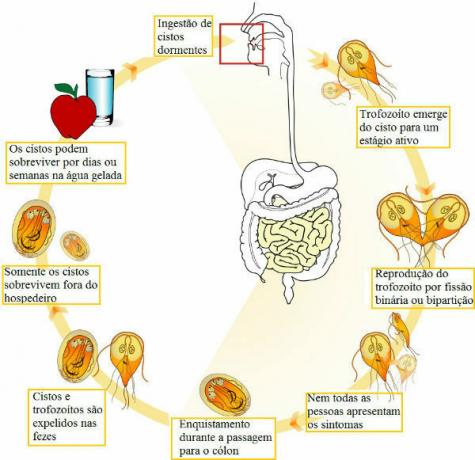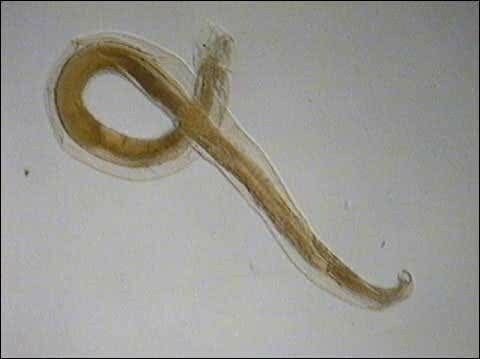Schistosomiasis is an infectious parasitic disease caused by the fluke worm. Schistosoma mansoni, which inhabits the blood vessels of the human liver and intestine.
The disease is also known as "water belly" and can progress to extremely serious clinical forms that can lead to death.
Cycle
The ultimate host of the Schistosoma mansoni it is the man who eliminates the worm's eggs through his feces.
When the feces are eliminated in the water, the eggs hatch and release ciliated larvae called miracidia. They penetrate the snails, the intermediate hosts, where they multiply.
After 4 to 6 weeks, the larvae leave the snail in the form of cercariae and return to the water. In this environment, they can live for a while before re-entering humans through the skin or mucosa.
Once inside the individual, the worms enter the venous circulation and reach the heart and lungs.
From the heart, they are delivered through the arteries to various parts of the body, with the liver being the preferred location for the parasite.
In the liver, they grow on blood and then migrate to the veins in the intestine. From there, they reach adult form, mate and start laying eggs, starting a new cycle.

Symptoms
Schistosomiasis has two phases: acute and chronic.
acute phase
The acute phase represents the onset of the disease and is characterized by cercarial dermatitis caused by the penetration of cercariae into the skin.
At this time, redness of the skin, swelling and itching where the worm penetrated the skin are common.
After 1 to 2 months, the symptoms that characterize the acute form of schistosomiasis appear, such as:
- Fever;
- Headache;
- Nausea;
- Decrease in physical strength;
- Muscle aches;
- Cough;
- slimming;
- Diarrhea.
Chronic phase
In the chronic phase, the liver it is usually the most compromised organ.
Depending on the individual's susceptibility and intensity of the infection, the disease can progress and affect the following organs:
- Intestines: It is the most common form, and it can be asymptomatic or characterized by diarrhea that can present mucus and blood.
- Spleen: Organ augmentation.
- Liver: Organ augmentation.
In this phase, the increase in the size of the belly is also common, as the abdomen becomes more dilated. Hence the name "water belly".
Learn more, read also:
- Vermin
- platyhelminths
Treatment
Schistosomiasis is treated with specific medications capable of curing the disease or reducing the parasite load, in addition to preventing its progression to severe forms.
In more severe cases of schistosomiasis, hospitalization or surgical interventions may be necessary.
Prevention
Schistosomiasis is a disease that can be prevented through sanitation adequate.
Other preventive measures include:
- Sewage must be treated before being discharged into lakes and dams;
- Do not evacuate in places near water that is used for bathing or drinking;
- Do not enter lakes, ponds or dams where snails live;
- Wear rubber pants, boots and gloves when coming into contact with contaminated water.



